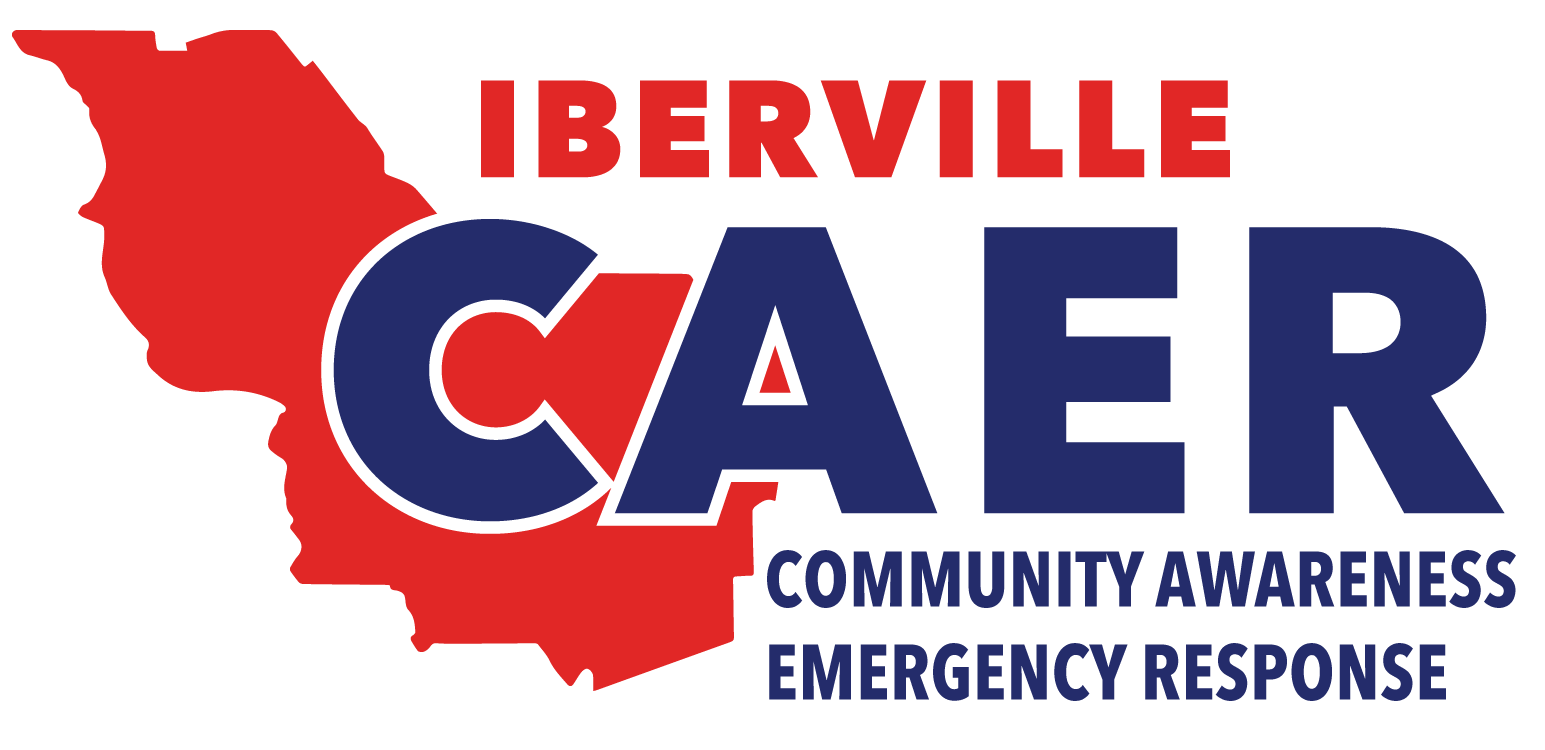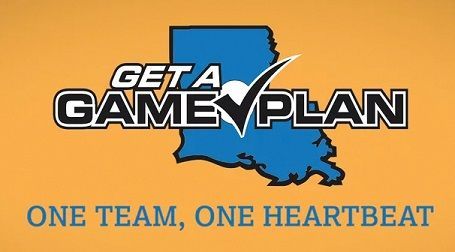HOME & PERSONAL SAFETY
Home Safety
HOME HEATING SAFETY
- Read labels and follow all warning and lighting instructions.
- Keep clear space around heating equipment.
- All home fuel-burning equipment should be inspected yearly by an expert.
- Fuel-burning heaters used to warm the house should be vented to the outside. If you must use an unvented heater, leave a window open at least one inch and turn it off at night.
- Do not use a gas range or oven to heat a room.
- Never use a charcoal grill inside.
- Never close a fireplace vent until the fire is completely extinguished.
- Internal combustion engines such as automobiles, boats, lawnmowers, and generators produce lethal amounts of CO. Never run these engines in a closed or confined area.
- Inspect chimneys, stovepipes, flues, and connectors to be sure they are clean and in good repair.
- If you smell a strong gas odor, turn off the pilot light, and do not operate electrical switches. Call the gas company from another location.
- Turn off heating equipment if you smell fumes, your eyes sting, or you become dizzy or nauseous while it is operating, or if it has a fluttering or yellow flame.
- Do not use a space heater if the ceramic radiants are broken or out of place.
- Never store or use flammable liquids like gasoline, cleaning fluid, or paint thinners near heating equipment.
- Never smoke while working with gas-powered equipment.
- If your heating equipment has a pilot light and you have trouble keeping it lit or if the control valve is hard to operate, call the gas company to have it serviced.
Resources: Home Heating Safety
HOME FIRE SAFETY
11 Vital Tips When Fire Strikes
- Alert others by shouting “Fire”. If a fire starts in your home, awaken all occupants in your home and immediately get out!
- Once you and your family are outside, contact 911 and be sure the dispatcher has the location of your home.
- Walk in a crouched position.
- Escape through the nearest exit.
- Don’t waste time dressing.
- Don’t try to gather valuables.
- Never open a hot door.
- If possible, place a wet cloth over the nose and mouth.
- Close all doors behind you.
- Meet at a pre-established location outside your home.
- Call the fire department from a neighbor’s phone.
Never go back into a burning house.
Home Fires
In just two minutes, a fire can become life-threatening.
In five minutes, a residence can be engulfed in flames.
Learn About Fires
- Fire is FAST! In less than 30 seconds a small flame can turn into a major fire. It only takes minutes for thick black smoke to fill a house or for it to be engulfed in flames.
- Fire is HOT! Heat is more threatening than flames. Room temperatures in a fire can be 100 degrees at floor level and rise to 600 degrees at eye level. Inhaling this super-hot air will scorch your lungs and melt clothes to your skin.
- Fire is DARK! Fire starts bright, but quickly produces black smoke and complete darkness.
- Fire is DEADLY! Smoke and toxic gases kill more people than flames do. Fire produces poisonous gases that make you disoriented and drowsy. Asphyxiation is the leading cause of fire deaths, exceeding burns by a three-to-one ratio.
Smoke Alarms
A working smoke alarm significantly increases your chances of surviving a deadly home fire.
- Test batteries monthly.
- Replace batteries in battery-powered and hard-wired smoke alarms at least once a year (except non-replaceable 10-year lithium batteries).
- Install smoke alarms on every level of your home, including the basement, and both inside and outside of sleeping areas.
- Replace the entire smoke alarm unit every 8-10 years or according to the manufacturer’s instructions.
- Never disable a smoke alarm while cooking – it can be a deadly mistake.
NOTE: There are a variety of Smoke Alarms for People with Access or Functional Needs including visual and hearing impaired.

Before a Fire
- Create and Practice a
Fire Escape Plan.
- In the event of a fire, remember that every second counts, so you and your family must always be prepared. Escape plans help you get out of your home quickly.
- Twice each year, practice your home fire escape plan. Some tips to consider when preparing this plan include:
- Find two ways to get out of each room in the event the primary way is blocked by fire or smoke.
- A secondary route might be a window onto a neighboring roof or a collapsible ladder for escape from upper-story windows.
- Make sure that windows are not stuck, screens can be taken out quickly, and that security bars can be properly opened.
- Practice feeling your way out of the house in the dark or with your eyes closed.
- Teach children not to hide from firefighters. (This is taught at
Safety Town!)
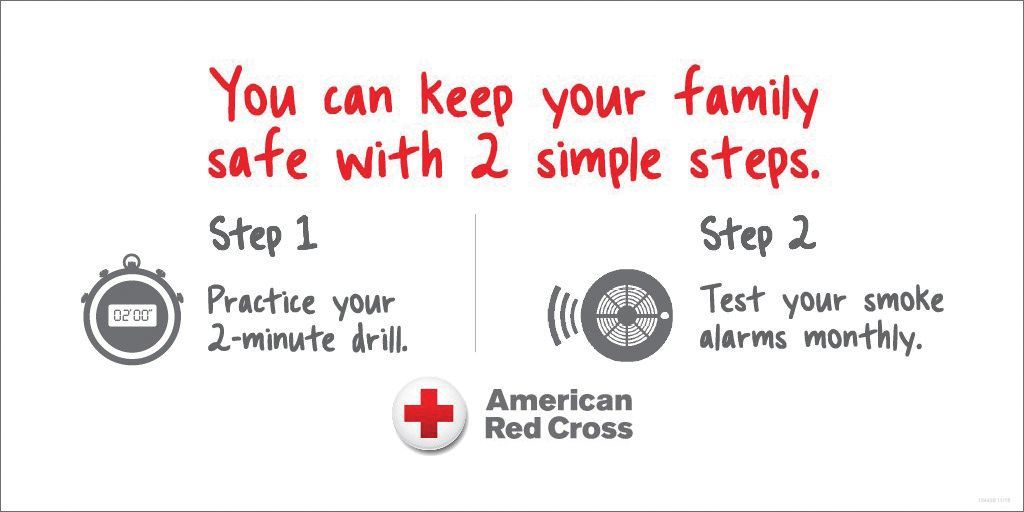
During a Fire
- Crawl low under any smoke to your exit – heavy smoke and poisonous gases collect first along the ceiling.
- Before opening a door, feel the doorknob and door. If either is hot or if there is smoke coming around the door, leave the door closed and use your second way out.
- If you open a door, open it slowly. Be ready to shut it quickly if heavy smoke or fire is present.
- If you can’t get to someone needing assistance, leave the home and call 9-1-1 or the fire department. Tell the emergency operator where the person is located.
- If pets are trapped inside your home, tell firefighters right away.
- If you can’t get out, close the door and cover vents and cracks around doors with cloth or tape to keep smoke out. Call 9-1-1 or your fire department. Say where you are and signal for help at the window with a light-colored cloth or a flashlight.
- If your clothes catch fire, stop, drop, and roll:
- Stop immediately
- Drop to the ground, and cover your face with your hands
- Roll over and over or back and forth until the fire is out.
- If you or someone else cannot stop, drop, and roll, smother the flames with a blanket or towel.
- Use room temperature water to treat the burn immediately for 3 to 5 minutes.
- Cover with a clean, dry cloth.
- Get medical help right away by calling 9-1-1 or the fire department.

After a Fire
The following checklist serves as a quick reference and guide for you to follow after a fire strikes.
- Contact your local disaster relief service, such as The Red Cross, if you need temporary housing, food, and medicine.
- If you are insured, contact your insurance company for detailed instructions. If you are uninsured, try contacting private organizations for aid and assistance.
- Check with the fire department to make sure your residence is safe to enter. Be watchful of any structural damage caused by the fire.
- The fire department should check that utilities are either safe to use or are disconnected before they leave the site. DO NOT attempt to reconnect utilities yourself.
- Conduct an inventory of damaged property and items. Do not throw away any damaged goods until after an inventory is made.
- Try to locate valuable documents and records. Refer to information on contacts and the replacement process inside this brochure.
- Begin saving receipts for any money you spend related to fire loss. The receipts may be needed later by the insurance company to verify losses claimed on income tax.
- Notify your mortgage company of the fire.
Resources: Home Fire Safety
Source: Department of Homeland Security (www.ready.gov)
GENERATOR SAFETY
In a power outage or the aftermath of a storm, a generator is an invaluable piece of equipment that can, at the very least, help your life begin to feel normal again.
CARBON MONOXIDE Poisoning
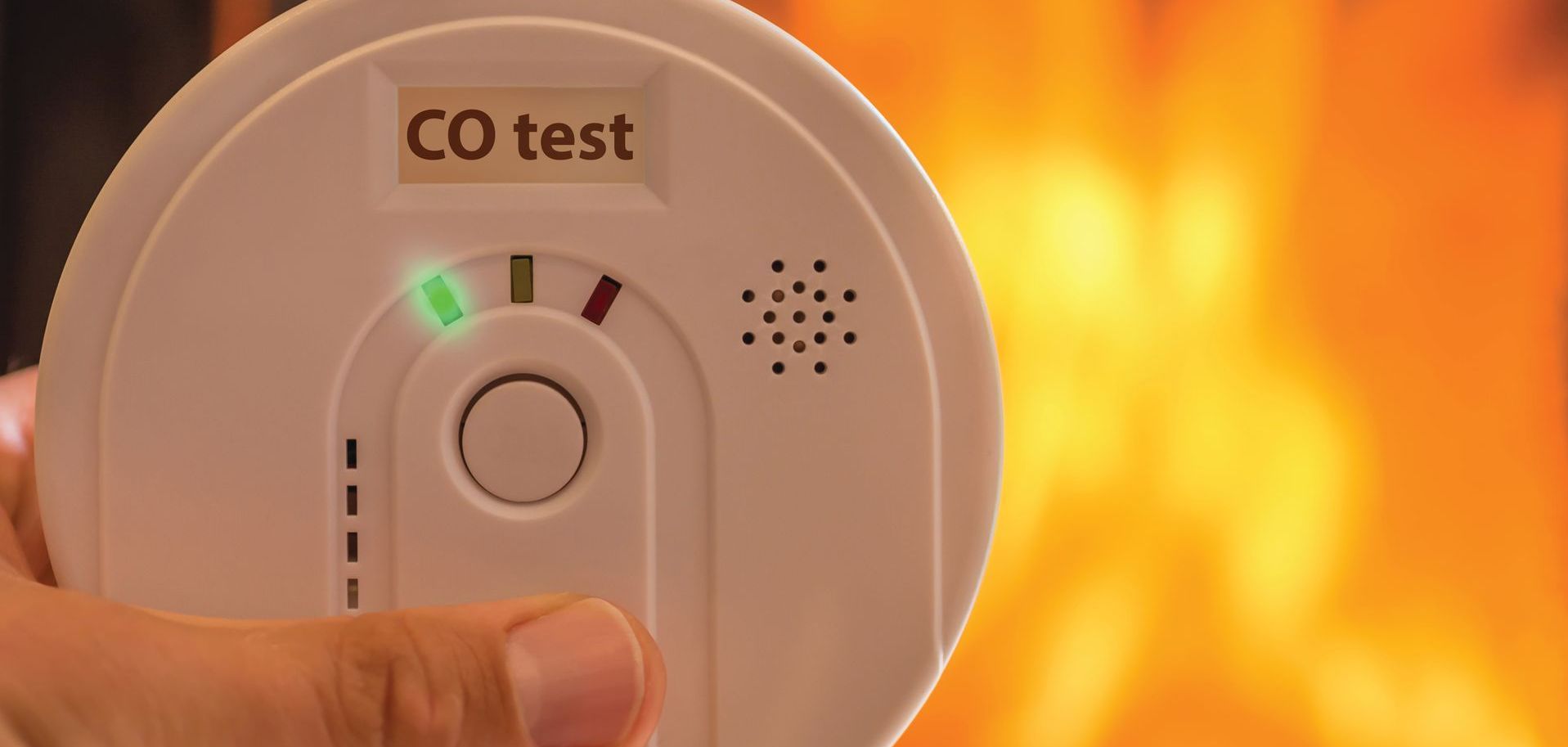
Carbon Monoxide (CO) poisoning occurs when an internal combustion engine or improperly adjusted fuel-burning appliance is operated in a closed area without fresh air. The early stages of CO exposure include headaches, dizziness, and drowsiness. A conscious victim may look or act intoxicated. Other symptoms include blurred vision, irritability, and an inability to concentrate. Severe cases cause nausea and vomiting, shortness of breath, convulsions, unconsciousness, and eventually death. If the victim is unconscious, move him/her to an area with fresh air and place him/her on his/her side with his/her head resting on an arm. If the victim is not breathing, begin mouth-to-mouth resuscitation and CPR if necessary and call 911.
PROTECTING YOUR HOME FROM WEATHER HAZARDS
Retrofitting: Protecting Your Home from Hazards
Retrofitting means making changes to existing buildings to protect them from hazards, like flooding.
Homeowner’s Guide to Retrofitting: Six Ways to Protect Your House from Flooding
Wind, Hurricanes, and Tornadoes
The force of a windstorm pushes against the foundation of your home. This force is transferred from your roof to the exterior walls and finally to the foundation. Homes can be damaged or destroyed when the energy from the wind is not properly transferred to the ground.
If you live in an area prone to high winds, make sure your roof is firmly secured to the main frame of the residence. Consider building a wind-safe room or shelter in your home to protect yourself.
Taking Shelter From the Storm: Building a Safe Room Inside Your House
There are several additional steps you can take to reduce wind damages and losses, including the following:
- Apply roof bracing using truss bracing, gable end bracing, and hurricane straps.
- Secure light fixtures and other items that could fall or shake loose in such events.
- Move heavy or breakable objects to low shelves.
- Anchor water heaters and bolt them to wall studs.
- Purchase storm shutters for exterior windows and doors to protect your home against high winds.
Hazard Mitigation Resources
Learn more about hazard mitigation measures that you can take to reduce your risk from disasters.
Iberville Parish Office of Emergency Preparedness
Iberville Parish National Flood Insurance
Brian Romero
Building Inspector; Program Coordinator
Phone:
225-687-5150
58050 Meriam Street
Plaquemine, LA 70764
Governor’s Office of Homeland Security and Emergency Preparedness
FEMA
FEMA Region VI Federal Regional Center
Phone: 940-898-5399
800 North Loop 288
Denton, TX 76209-3606
FEMA Headquarters
Resources: Protecting Your Home from Weather Hazards
Health and Medical Safety
FIrst aid tips
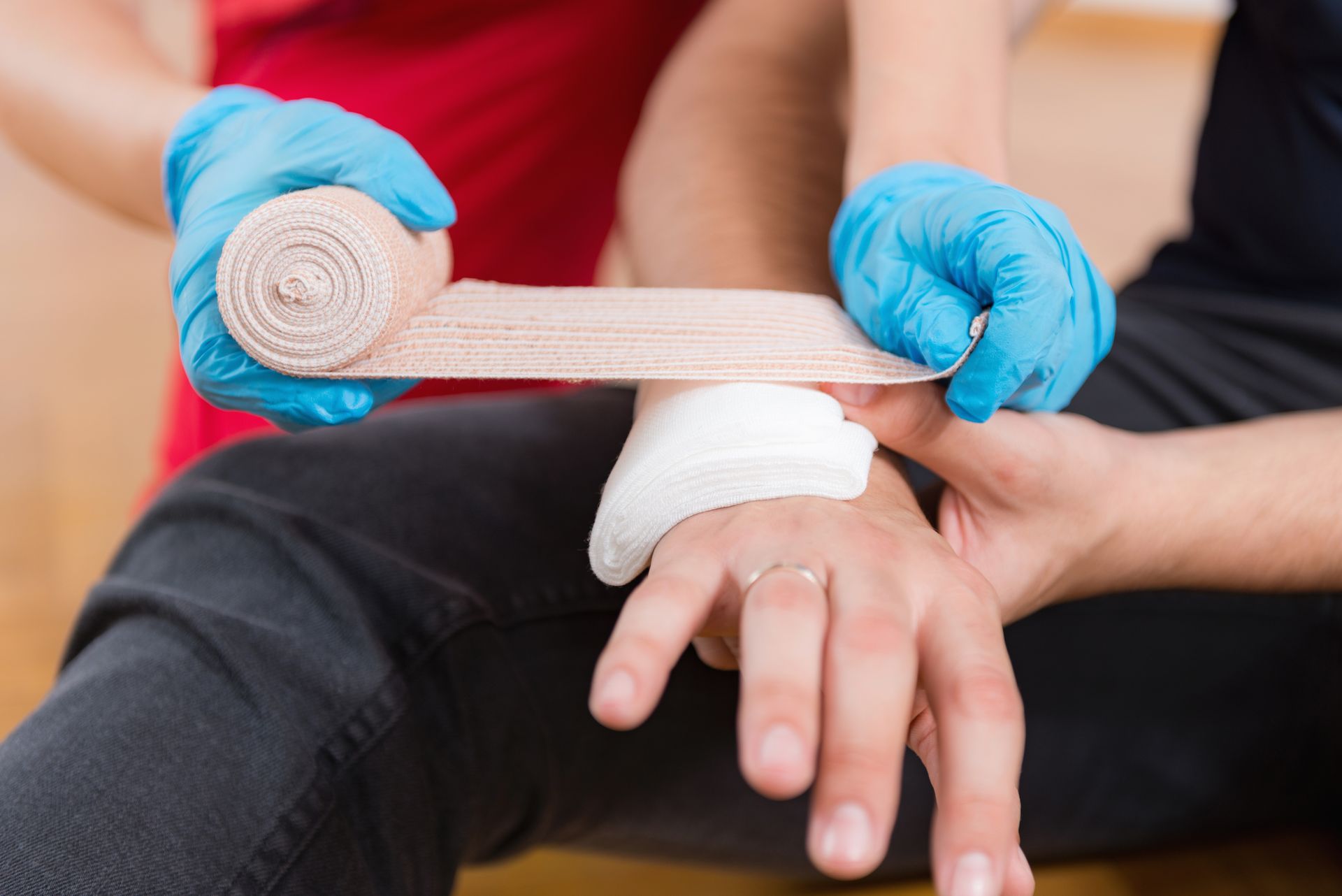
CPR and first aid are often required in emergencies. Administer CPR only if you are trained. Contact the American Red Cross, American Heart Association, or the YMCA for information about training.
Immediate Actions
1. Breathing and Circulation:
- Begin rescue breathing if the victim is not breathing
- Begin CPR if there is no pulse and you are trained.
2. Bleeding:
- Apply direct pressure to the wound and elevate it to stop persistent bleeding.
3. Shock:
- Lay the victim on his/her back and give assurance.
- Position the feet above the head.
- Monitor breathing and circulation.
- If neck or spinal injuries are evident or suspected, move the victim only if:
a. it is necessary to establish or maintain a vital function such as breathing, or
b. it must be done to avoid further injury
4. Chest Pain:
- Help a conscious victim into a comfortable position with the head raised.
- Loosen tight clothing.
- Help the victim take prescribed medication if necessary.
- If the victim has no pulse, begin CPR if you are trained.
Follow-Up Actions
1. Stay calm!
2. Call 911
Have someone call 911.
Rescuers must not leave victims before administering first aid to relieve the crisis.
(Exception: If you are alone with an unconscious, unresponsive adult, call 911 before beginning rescue breathing.)
3. Other Health Problems
Check the victim for emergency medical ID tags and medications.
4. Food and Liquids
Never give food or liquids to victims who are unconscious, semiconscious, nauseous, or severely injured.
When Calling 911 For Medical Help
1. Give the location.
- Mention a landmark at or near the scene to help medics find it.
2. Give the facts.
- If feasible, give information about:
- what happened
- the number of injured persons
- first aid given
- additional equipment needed
NOTE: If someone else places the call for help, confirm that the call has been made.
STOP THE BLEED
Proper Bleeding Control Techniques
Massive bleeding from any cause, but particularly from an active shooter or explosive event where a response is delayed can result in death. Similar to how the general public learned and now routinely performs CPR, the public would benefit from learning proper bleeding control techniques, including how to use their hands, dressings, and tourniquets.
Victims can quickly die from uncontrolled bleeding, within five to 10 minutes. However, anyone at the scene can act as an immediate responder and save lives if they know what to do.
1. Apply pressure with hands
2. Apply dressing and press
3. Apply tourniquet (wrap, wind, secure, time)
4. CALL 9-1-1
An initiative of the American College of Surgeons and the Hartford Consensus that contains diagrams, news, videos, and other resources contributed by a variety of other private and nonprofit partners to help prepare you if you are a witness to one of these events.
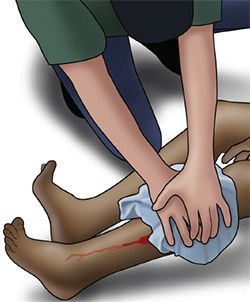
Stop the Bleed Classes
If you are interested in enrolling in a Stop the Bleed class or would like us to host a class at your business, visit
www.lern.la.gov and
www.redcross.org.
Resources: Stop the Bleed
PREVENTING PEDIATRIC POISONING
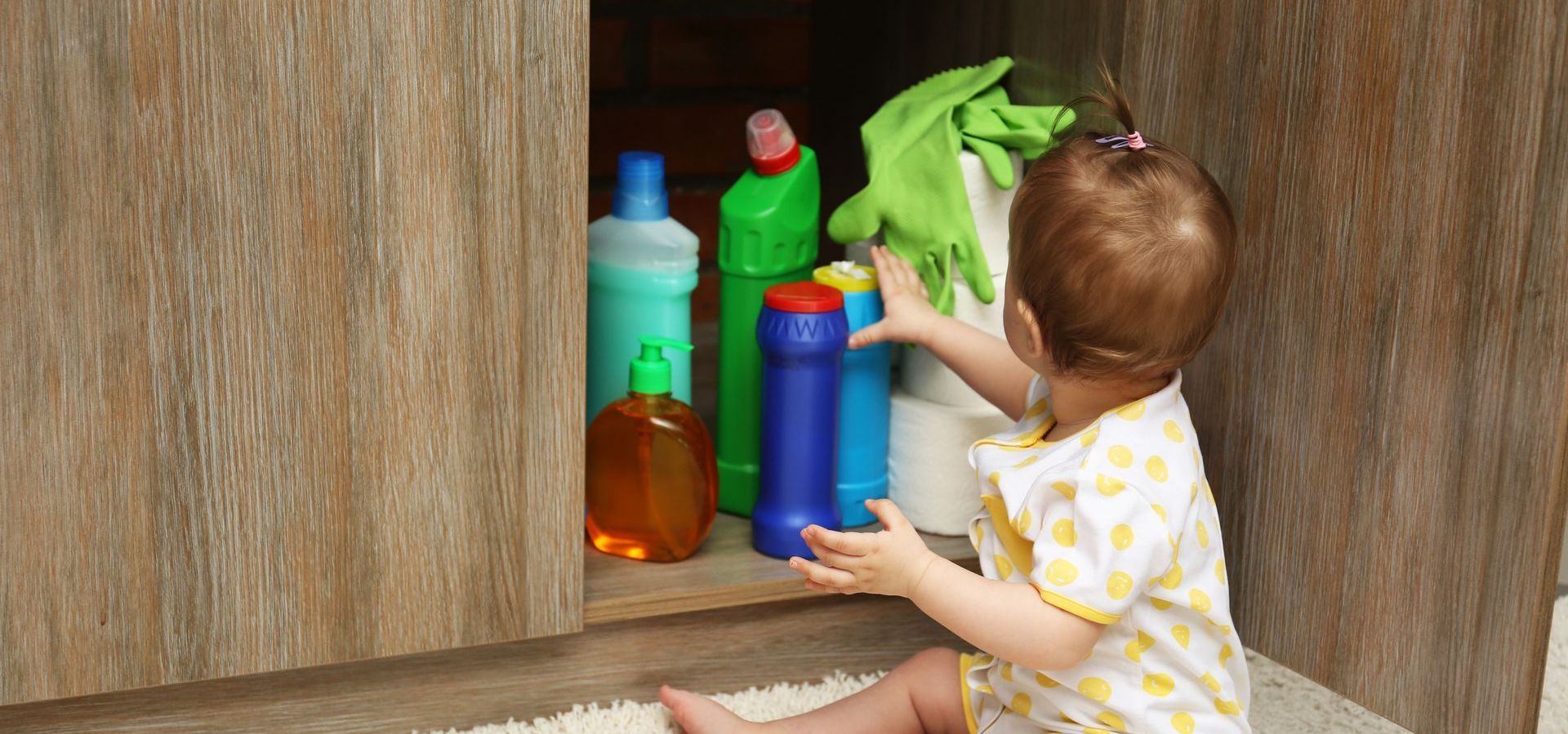
Important Contact Phone Numbers for Suspected Child Poisoning
- Poison Control 1-800-222-1222
- 911 Medical Assistance
- Your Physician and/or hospital
- Have Syrup of Ipecac on hand and only use if instructed to do so by Poison Control or a physician.
- When speaking with Poison Control or the doctor, have the container and pills, or object that was in the mouth, and, if possible, the child with you.
- For Pet Poisoning, contact your veterinarian or Poison Control
Preventative Actions
- NEVER tell children that medicine is candy, or that it tastes good.
- Don’t take medicine in front of children since they like to imitate adults.
- Have Syrup of Ipecac on hand and only use if instructed to do so by Poison Control or a physician.
- Lock up potentially dangerous products out of sight and reach of children and pets. These include:
- medicines
- vitamins
- chemicals such as those for cleaning
- cigarettes
- matches
- alcoholic beverages
- purse
- perfume
- covered trash receptacles
Pay Particular Attention to:
- Behavioral changes: clumsiness, drowsiness, coma, convulsions, dizziness, mental disturbances, delirium, and level of consciousness
- Look for the color and temperature of skin, lips, and mucous membranes
- Look for elevated temperature, blood pressure, pulse rate, respiratory alterations, sweating
- Paralysis
- Eyes: the size and reaction of the pupils
- Oral signs: burns, discoloration, dryness, excessive salivation, stains, breath odors, pain when swallowing
- Nausea, vomiting: appearance, odor, presence of blood, upset stomach
- Diarrhea: appearance, odor, presence of blood
Resources: Pediatric Poisoning
PDF: Preventing Pediatric Poisoning
Poison Control 1-800-222-1222
THE DANGERS OF VAPING
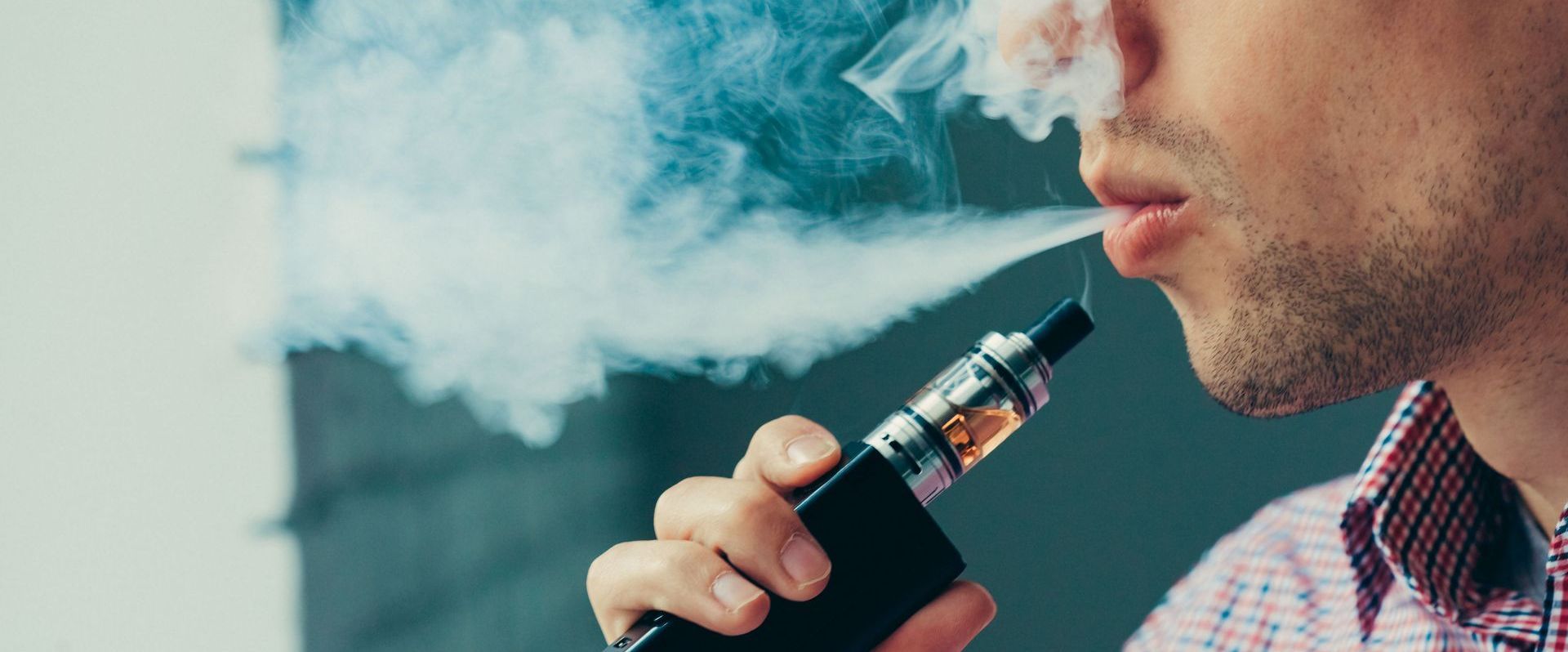
Vaping
Vaping is the act of inhaling and exhaling the aerosol, often referred to as vapor, which is produced by an e-cigarette or similar device. The term is used because e-cigarettes do not produce tobacco smoke, but rather an aerosol, often mistaken for water vapor, that consists of fine particles. Many of these particles contain varying amounts of toxic chemicals, which have been linked to cancer, as well as respiratory and heart disease.
Recommendations for the Public:
- If you are concerned about the health risks associated with e-cigarettes, consider discontinuing the products.
- E-cigarette products should not be bought off the street and should not be modified or have substances not intended for use by the manufacturer added.
- Youth, young adults and pregnant women, as well as adults who do not currently use tobacco products, should not use e-cigarettes.
- Monitor for symptoms of severe side effects if you do use e-cigarettes. If you do develop symptoms, seek medical attention.
- Symptoms Include:
- Cough
- Shortness of breath
- Chest pain
- Nausea
- Vomiting
- Diarrhea
- Fatigue
- Fever
- Weight loss
Adult smokers who are looking to quit smoking can call 1-800-QUIT-NOW or visit quitwithusla.org for information on FDA-approved counseling and medications.
How Many Youth are Using E-Cigarettes?
- In 2023, e-cigarettes were the most commonly used tobacco product among middle and high school students in the United States.
- In 2023, 2.1 million (7.7%) students used e-cigarettes. This includes: 550,000 (4.6%) middle school students and 1.56 million (10.0%) high school students
- During 2017 and 2018, e-cigarette use skyrocketed among youth, leading the U.S. Surgeon General to call the use of these products among youth an epidemic in the United States.
What are the Risks for Youth?
- Most e-cigarettes contain nicotine, which is highly addictive. Nicotine exposure during adolescence can:
- Harm brain development, which continues until about age 25.
- Impact learning, memory, and attention.
- Increase risk for future addiction to other drugs.
- Young people who use e-cigarettes may be more likely to go on to use regular cigarettes.
- Many e-cigarettes come in kid-friendly flavors – including mango, fruit, and crème – which make e-cigarettes more appealing to young people.
- E-cigarette aerosol is not harmless. It can contain harmful substances, including:
- Nicotine
- Cancer-causing chemicals
- Volatile organic compounds
- Ultrafine particles
- Flavorings that have been linked to lung disease
- Heavy metals such as nickel, tin, and lead
What Can You Do as a Parent or Caregiver?
As a parent or caregiver, you have an important role in protecting children from e-cigarettes.
- Talk to your child or teen about why e-cigarettes are harmful to them. It’s never too late.
- Set a good example by being tobacco-free.
Resources: Vaping and E-cigarettes
OPIOIDS AND OPIOID ABUSE
Opioids include prescription medications used to treat pain such as morphine, codeine, methadone, oxycodone, hydrocodone, fentanyl, hydromorphone, and buprenorphine, as well as illicit drugs such as heroin. High rates of pain medication prescribing behavior result in concomitant misuse, abuse, and overdose deaths. According to the Centers for Disease Control and Prevention (CDC), while the opioid prescribing rate for Louisiana has steadily decreased since 2012, Louisiana’s ranking when compared to other states has increased.
Opioid abuse is a problem in Louisiana where almost all indicators (addiction to opioid medications, overdose deaths, emergency room admissions, and over-prescribing) are evidence of the problem.
Preventing Overdose
If you are concerned about your own use of opioids, don’t wait! Talk with the healthcare professionals who prescribed the medications for you.
If you are concerned about family members or friends, urge them to talk to whoever prescribed their medications.
Effective treatment of an opioid use disorder can reduce the risk of overdose and help a person who is misusing or addicted to opioid medications attain a healthier life. Opioid use disorder is a chronic disease, much like heart disease.
If You Suspect an Overdose
An opioid overdose requires immediate medical attention.
An essential first step is to get help from someone with medical expertise as soon as possible. Call 911 immediately if you or someone you know exhibits any of the signs listed below. All you have to say is “Someone is unresponsive and not breathing.” Give a specific address and/or description of your location.
Signs of overdose, which is a life-threatening emergency, include the following:
- The face is extremely pale and/or clammy to the touch.
- The body is limp.
- Fingernails or lips have a blue or purple cast.
- The person is vomiting or making gurgling noises.
- The person cannot be awakened from sleep or cannot speak.
- Breathing is very slow or stopped.
- The heartbeat is very slow or stopped.
Signs of overmedication, which may progress to overdose, include:
- Unusual sleepiness or drowsiness.
- Mental confusion, slurred speech, or intoxicated behavior.
- Slow or shallow breathing.
- Extremely small “pinpoint” pupils.
- Slow heartbeat or low blood pressure.
- Difficulty being awakened from sleep.
Sources:
Substance Abuse and Mental Health Services Administration (SAMHSA)
U.S. Department of Health and Human Services (HHS)
Natural Disaster Preparedness
HEAT WAVE SAFETY
- Strenuous activities should be reduced, eliminated, or rescheduled to the coolest time of the day.
- Individuals at risk should stay in the coolest available place.
- Take Cool Baths Or Showers. Cool water can remove body heat 25 times faster than cool air.
- Wear lightweight, light-colored clothing that reflects heat and sunlight.
- Drink plenty of water or other non-alcoholic fluids.
- Drink water, fruit juices, or sports drinks that can help replenish lost salts and minerals. These are preferable to soft drinks, coffee, or alcohol, which can further dehydrate you.
Heat Exhaustion Signs and Symptoms:
- Moist and clammy skin, usually pale
- Pupils dilated
- Normal or subnormal temperature
- Weak, dizzy or faint
- Headache
- No appetite, nausea
- Rapid, shallow breathing
First Aid:
- Lay down and loosen clothing
- Apply cool, wet cloths
- Fan or move the victim to an air-conditioned room
- Provide sips of water (If nausea occurs, discontinue. if vomiting continues, seek immediate attention.)
Heat Stroke Signs and Symptoms:
Heat stroke is a severe medical emergency. Call 911 or get the victim to a hospital immediately. Delay can be fatal.
- Dry hot skin, usually red
- Pupils constricted, later become dilated
- Very high body temperature
- Coma or near coma
- Pulse strong and rapid, becomes weak as damage progresses
- Mental confusion, anxiety, agitation
- Initially deep, rapid breathing becomes shallow and weak as damage progresses
- Headache, dry mouth, shortness of breath
- Loss of appetite, nausea, or vomiting
- Increasing dizziness and weakness, decreased blood pressure
- Convulsions, sudden collapse, and possible unconsciousness
Resources: Heat Wave Safety
FAMILY EMERGENCY DISASTER PLANNING
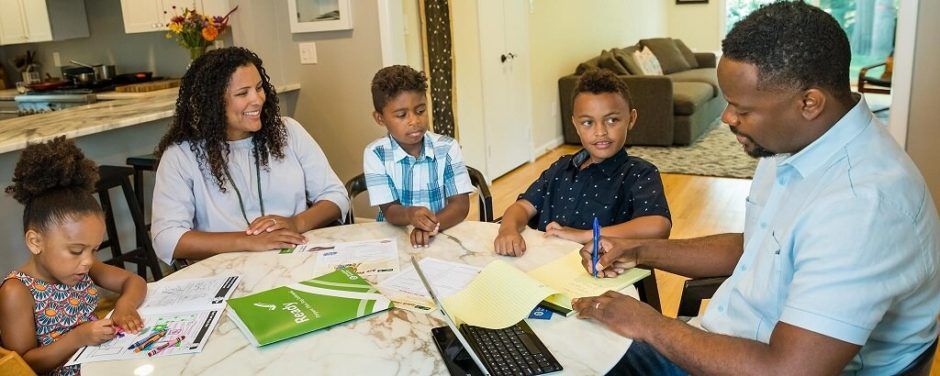
Photo courtesy of FEMA
Create an Emergency Plan
Visit Iberville Parish Office of Emergency Preparedness to:
- Find out which disasters could occur in your area.
- Ask how to prepare for each disaster.
- Ask how you would be warned of an emergency.
- Learn your community’s evacuation routes.
- Ask about special assistance for elderly or disabled persons.
- Ask your workplace about emergency plans.
- Learn about emergency plans for your children’s school or day care center.
Develop Your Family Plan
- Meet with household members. Discuss with children the dangers of fire, severe weather, earthquakes, and other emergencies.
- Discuss how to respond to each disaster that could occur.
- Discuss what to do about power outages and personal injuries.
- Draw a floor plan of your home. Mark two escape routes from each room.
- Teach everyone how to turn off the water, gas, and electricity at main switches, and how to use a fire extinguisher.
- Post emergency telephone numbers near telephones.
- Teach children how and when to call 911, police, and fire.
- Instruct household members to turn on the radio for emergency information.
- Pick one out-of-state and one local friend or relative for family members to call if separated by disaster (it is often easier to call out of state than within the affected area).
- Teach children how to make long-distance telephone calls.
- Pick two meeting places.
- A place near your home in case of a fire.
- A place outside your neighborhood in case you cannot return home after a disaster.
- Take basic first aid and CPR classes.
- Keep family records in a water and fireproof container.
- Install safety features in your house, such as smoke detectors and fire extinguishers.
- Inspect your home for potential hazards (such as items that can move, fall, break or catch fire) and correct them.
Before The Emergency
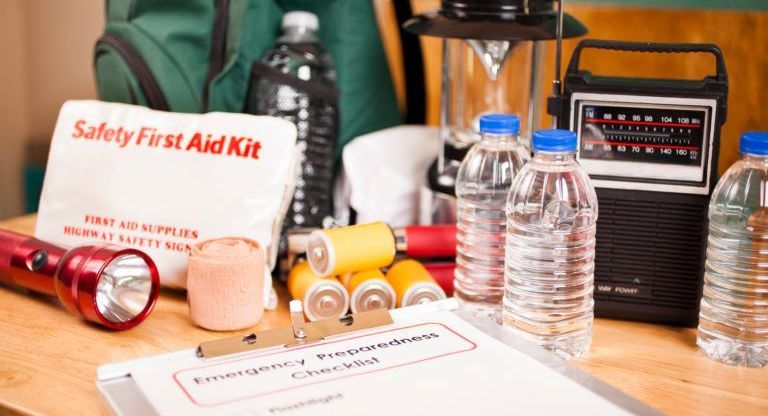
- Prepare a plan.
- Know your risk. Consider special circumstances of people with special needs, recreational vehicles, pets, and boats.
- Determine where you will shelter and know your evacuation routes – at home, family, or friend’s home if located away from the risk area, hotel located inland, or Emergency Public Shelters (no pets, alcohol, or firearms allowed).
- Time the trip and multiply by three (3) for pre-storm road and traffic conditions.
- Listen to a local radio or TV station for official announcements.
- Prepare a disaster supply kit for evacuation
Store the Following in Sturdy, Easy-to-Carry Containers:
- First aid kit
- Battery-operated radio and/or TV, extra batteries
- Flashlight, extra batteries and bulbs
- Canned or dried food for a week, manual can opener
- Extra medicine, baby food, etc.
- Eating utensils
- Fully charged fire extinguishers
- Candles, matches, or disposable lighters
- Emergency cooking facilities and fuel
- Lantern and fuel
- Water
- Bleach
- Caulk or putty to seal the drain in the tub
- Wide masking tape
- Strong material to board up windows
- Up-to-date emergency phone list
- Blankets or sleeping bags
- Portable ice chest
- Identification and valuable papers (insurance) stored in a water-tight container
- Change of clothing
If Disaster Strikes
1. Remain calm and patient.
2. Put your plan into action.
3. Check for injuries – Give first aid and get help for seriously injured people.
4. Check for damage in your home.
- Use flashlights. Do not light matches or turn on electrical switches if you suspect damage.
- Check for fires, fire hazards, and other household hazards.
- Sniff for gas leaks, starting at the water heater. If you smell gas or suspect a leak, turn off the main gas valve, open windows, and get everyone outside quickly.
- Shut off any other damaged utilities.
- Clean up spilled medicines, bleaches, gasoline, and other flammable liquids immediately.
5. Remember to:
- Confine or secure pets.
- Call your family contact. Do not use the telephone again unless it is a life-threatening emergency.
- Check on your neighbors, especially elderly or disabled persons.
- Stay away from downed power lines to avoid electrocution.
Planning for Pets in Emergencies
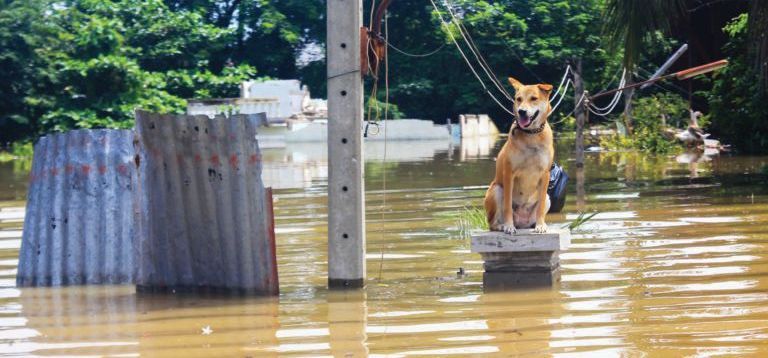
Making plans for your family is extremely important. Don’t forget to plan for the animals in you life, too! The location of your evacuation destination may or may not accept pets, so call ahead and check. Animal shelters will be set up in various parts of the state on an “as-needed” basis. The Louisiana Department of Agriculture and Forestry works year-round with the Louisiana State Animal Response Team (LSART) to provide sheltering opportunities. Species-specific disaster preparedness advice is available at www.lsart.org.
Create a pet emergency kit to keep your pet comfortable for three days including the following items:
- water, food, and medications with dosage information/instructions
- a manual can opener (if needed) & bowls
- a collar/leash/harness
- a pet carrier (for smaller animals)
- supplies for managing waste (such as plastic bags and newspaper or a litter box and litter)
- copies of vaccination and medical records
- a photo of the pet with its name on it
- care plan
Resources: Emergency Disaster Planning
Iberville Parish Office of Emergency Preparedness 225-687-5140
PREPARING FOR ELECTRICAL OUTAGES
First, use perishable food from the refrigerator, then use food from the freezer. To minimize the number of times you open the freezer door, post a list of contents on the freezer door. In a well-insulated freezer, foods will usually still have ice crystals in their centers (meaning the foods are safe to eat) for at least three days. Finally, begin to use nonperishable foods and staples.
Short Term Food Supplies (Use Within Six Months):
- Powdered milk (boxed)
- Dried fruit (in metal container)
- Dry, crisp crackers (in metal container)
- Potatoes
- Whole dry milk
- Canned fruit juices
- Canned meats and fish (Vienna sausages, meat spread or tuna)
- Meat substitutes, like beans
- Bread and crackers
- Peanut butter
- Dry cereals
- Granola bars or cookies
- Staples (sugar, salt, pepper)
- High-energy foods (peanut butter, jelly, crackers, nuts, health food bars, trail mix)
- Stress foods (sugar cookies, hard candy, sweetened cereals)
- Vitamins
- Ready-to-eat canned meats, fruits, and vegetables
- Smoked or dried meats; such as beef jerky
- Juices (canned, powdered, or crystalized)
- Soups (bouillon cubes or dried “soups in a cup”)
Long Term Food Supplies (May Be Stored Indefinitely with Proper Containers and Conditions):
- Wheat
- Corn
- Soybeans
- Vitamin C
- Salt
- White rice
- Powdered milk (in nitrogen-packed cans)
- Vegetable oils
- Dry pasta
- Instant coffee, tea and cocoa
- Noncarbonated soft drinks
- Bouillon products
- Baking powder
Use Within One Year
- Canned condensed meat and vegetable soups
- Canned fruits, fruit juices, and vegetables
- Ready-to-eat cereals and uncooked instant cereals (in metal containers)
- Peanut butter
- Jelly
- Hard candy, chocolate bars, and canned nuts
Emergency Cooking Options
- For emergency cooking, you can use a fireplace, a charcoal grill, or camp stove outdoors only.
- You can also heat food with a candle warmer, chafing dishes, and fondue pots.
- Canned food can be eaten right out of the can. If you heat it in the can, be sure to open the can and remove the label first.
- Rotate your food supply. Use foods before they go bad and replace them with fresh supplies, dated with ink or marker.
- Place new items at the back of the storage area and older ones in front.
- Your emergency food supply should be of the highest quality possible.
- Inspect your reserves periodically to make sure there are no broken seals or dented containers.
- Place paper or waxed packages in a watertight container, such as a larger plastic bag. This will keep them dry and make them easier to carry.
Resources: Preparing for Electrical Outages
THUNDERSTORMS AND LIGHTNING
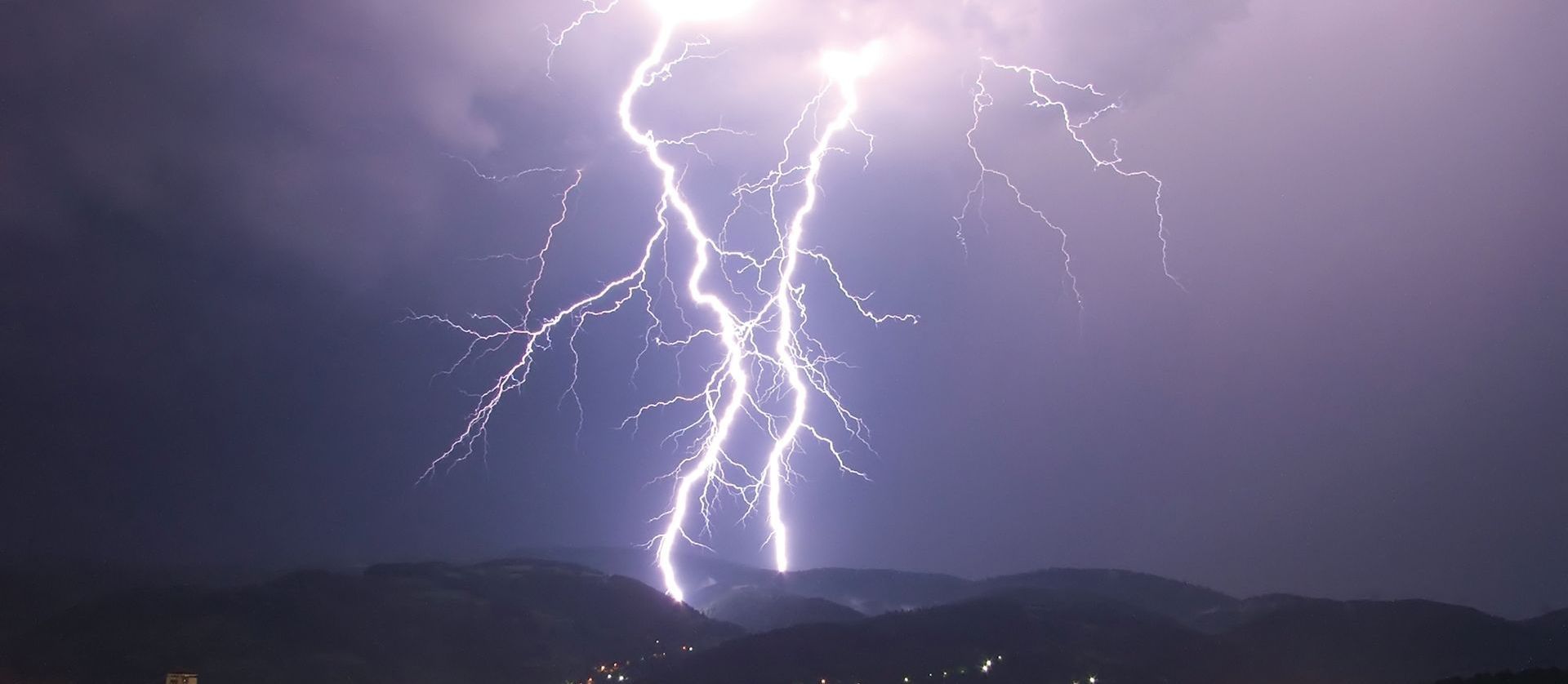
Severe Thunderstorm Watch
A severe thunderstorm watch advises when and where severe thunderstorms are most likely to occur. Watch the sky and stay tuned to TV or radio to know when warnings are issued.
Severe Thunderstorm Warning
Severe thunderstorm warnings are issued when severe weather has been reported by spotters or indicated by radar. Warnings indicate imminent danger to life and property for those in the path of the storm.
What to do When Thunderstorms Approach
- Go to a safe shelter immediately!
- Move to a sturdy building or car.
- Do not take shelter in small sheds, under isolated trees, or in convertible automobiles.
- Get out of boats and away from water.
- Turn off air conditioners.
- Get to higher ground if flash flooding or flooding is possible. Once flooding begins, abandon cars and climb to higher ground.
- If caught outdoors and no shelter is nearby, find a spot away from trees, fences, and poles.
Ways to Avoid Becoming a Victim of Lightning
- When outdoors, rush to safety at the first flash of lightning, crack of thunder or even darkening of the sky. Be aware – Hazy skies, especially in the East, can often hide thunderstorms.
- All thunderstorms are dangerous.
- Cars can offer shelter from lightning if necessary.
Resources: Thunderstorms and Lightning
TORNADO SAFETY
NOAA Weather Radio is the best means to receive warnings from the National Weather Service.
What to Know About Tornadoes:
- No place is safe from tornadoes.
- Leave the windows closed and immediately go to a safe place.
- In a home or building, move to an interior room or hallway on the lowest floor and get under a sturdy piece of furniture.
- Do not try to outrun a tornado in your car; instead, leave it immediately.
- Mobile homes, even if tied down, offer little protection from tornadoes and should be abandoned.
Resources: Tornadoes
FLASH FLOODS & FLOODING
Flash Flood or Flood Watch
Flash flooding or flooding is possible within the designated WATCH area - be alert.
Flash Flood or Flood Warning
Flash flooding or flooding has been reported or is imminent, take necessary precautions at once.
Urban and Small Stream Advisory
Flooding of small streams, streets, and low-lying areas, such as; railroad underpasses and urban storm drains, is occurring.
Flash Flood or Flood Statement
Follow-up information regarding a flash flood/flood event.
Rules for Being Safe in a Flooding Situation
- HEAD FOR HIGHER GROUND AND STAY AWAY FROM FLOOD WATERS!
- Get out of areas subject to flooding, including dips, low spots, canyons, washes, etc.
- Do not attempt to cross flowing streams.
- If driving, NEVER drive through flooded roadways!
- If the vehicle stalls, leave it immediately and seek higher ground. Rapidly rising water may engulf the vehicle and its occupants and sweep them away.
- Be especially cautious at night when it is harder to recognize flood dangers.
- Do not camp or park your vehicle along streams and washes, particularly during threatening conditions.
- Children should NEVER play around high water or storm drains.
Flood Preparation at Home
- Know your flood risk and elevation above the flood stage.
- Know your evacuation routes.
- Keep your automobile fueled.
- Store drinking water in clean bathtubs and various containers.
- Keep a stock of nonperishable food.
- Keep first aid supplies on hand.
- Keep a NOAA Weather Radio, a battery-powered portable radio, emergency cooking equipment, and flashlights in working order.
- Install check valves in building sewer traps to prevent flood water from backing up into drains of your home.
What Consumers Should Know About Flood Insurance
- Everyone lives in a flood zone.
- Flood damage is not covered by homeowners insurance policies.
- You can purchase flood insurance regardless of your level of flood risk. There is usually a 30-day waiting period before the coverage goes into effect.
- There is a low-cost policy for homes in low to moderate-risk areas.
- Contents coverage is separate, so renters can insure their belongings.
National Flood Insurance Program
If you live in a flood-prone area, consider purchasing Federal flood insurance, which will cover the value of a building and its contents. You can call 800-621-3362 to learn more about Federal flood insurance.
Resources: Flash Floods or Flooding
National Weather Service Flood Safety
National Flood Insurance Program: 1-800-FLOOD-29
Environmental Safety
WATER: THE REAL NECESSITY

Stocking water reserves and learning how to purify contaminated water should be among your top priorities in preparing for an emergency.
- You should store at least a two-week supply of water for each member of your family. Everyone’s needs will differ, depending on age, physical condition, activity, diet, and climate.
- A normally active person needs to drink at least two quarts of water each day. Hot environments can double that amount. Children, nursing mothers, and ill people will need more.
- You will need additional water for food preparation and hygiene. Store a total of at least one gallon per person, per day.
- If your supplies begin to run low, remember: Never ration water. Drink the amount you need today and try to find more for tomorrow.
Emergency Water Supplies
STORING WATER: Store water in thoroughly washed plastic, glass, fiberglass, or enamel-lined metal containers. Never use a container that has held toxic substances because tiny amounts may remain in the container’s pores. Sound plastic containers, such as soft drink bottles, are best.
Before storing your water, treat it with a preservative such as chlorine bleach to prevent the growth of microorganisms. Use liquid bleach that contains 5.25 percent sodium hypochlorite and no soap. Some containers warn, “Not for Personal Use.” You can disregard these warnings if the label states sodium hypochlorite is the only active ingredient and if you use only the small quantities in these instructions.
Three Easy Ways to Purify Water
- Purification Tablets release chlorine or iodine. They are inexpensive and available at most sporting goods stores and some drug stores.
- Boiling is the safest method of purifying water. Bring water to a rolling boil for 10 minutes, keeping in mind that some water will evaporate. Let the water cool before drinking. Boiled water will taste better if you put oxygen back into it by pouring it back and forth between two containers. This will also improve the taste of stored water.
- Chlorination uses liquid chlorine bleach to kill microorganisms. Add two drops of bleach per quart of water (four drops if the water is cloudy), stir, and let stand for 30 minutes. If the water does not taste and smell of chlorine at that point, add another dose and let stand for another 15 minutes.
Boil Water Advisory
If your local health authorities issue a boil water advisory, you should use bottled water or boil tap water because your community’s water is, or could be, contaminated with germs that can make you sick. Advisories may include information about preparing food, beverages, or ice; dishwashing; and hygiene, such as brushing teeth and bathing. Standard recommendations usually include this advice:
- Use bottled or boiled water for drinking, and to prepare and cook food.
- If bottled water is not available, bring water to a full rolling boil for 1 minute, then allow it to cool before use.
- Boil tap water even if it is filtered.
- Do not use water from any appliance connected to your water line, such as ice and water from a refrigerator.
- Breastfeeding is the best infant feeding option. If you formula feed your child, provide ready-to-use formula, if available.
Handwashing
- In many situations, you can use tap water and soap to wash hands. Follow the guidance from your local public health officials.
- Be sure to scrub your hands with soap and water for at least 20 seconds, and rinse them well under running water.
- If soap and water are not available, use an alcohol-based hand sanitizer that contains at least 60% alcohol.
Bathing and Showering
- Be careful not to swallow any water when bathing or showering.
- Use caution when bathing babies and young children. Consider giving them a sponge bath to reduce the chance of them swallowing water.
Washing Dishes
- If possible, use disposable plates, cups, and utensils during a boil water advisory.
- Household dishwashers generally are safe to use if the water reaches a final rinse temperature of at least 150 degrees Fahrenheit (65.55° Celsius), or if the dishwater has a sanitizing cycle.
- Sterilize all baby bottles.
- To wash dishes by hand:
- Wash and rinse the dishes as you normally would using hot water.
- In a separate basin, add 1 teaspoon of unscented household liquid bleach for each gallon of warm water.
- Soak the rinsed dishes in the water for at least one minute.
- Let the dishes air dry completely before using them again.
Laundry
- It is safe to wash clothes as usual.
Caring for Pets
- Pets can get sick by some of the same germs as people or spread germs to people. Provide bottled or boiled water after it has been cooled for pets to use.
- Boil tap water even if it is filtered.
- Do not use water from any appliance connected to your water line, such as ice and water from a refrigerator.
Caring for Your Garden and Houseplants
- You can use tap water for household plants and gardens.
Resources: Water - The Real Necessity
IMPROVING AIR QUALITY

TIP 1: Limit Your Driving
- Avoid driving during peak traffic periods.
- Try not to drive at all, especially during the morning and early afternoon.
- Organize your trips to combine errands into one trip
- Consider other commuting options, such as public transit and ride-sharing.
TIP 2: Drive Emission Wise
- If you must drive, use the least polluting of your vehicles.
- Where available, use clean fuels, avoid excessive idling, and areas of congestion.
- Stop and start evenly.
- Drive at a steady speed. Drive at medium speeds.
- Travel light.
- Consider fuel efficiency when buying a new car.
TIP 3: Refuel Carefully
- Refuel after 6 PM, if possible.
- Avoid spills and don’t try to top off your tank.
TIP 4: Maintain Your Vehicle
- Engine performance, emission control systems, and tire inflation are important.
- Don’t remove or tamper with pollution controls.
- Get regular engine tune-ups and car maintenance checks.
- Use an energy-conserving grade of motor oil. An EC multi-grade can improve your mileage by as much as 15 percent.
TIP 5: Live Emission Wise
- Buy low emission household products.
- Buy electric or fuel-efficient motorized equipment.
- Conserve electricity.
- Avoid spilling gas when refueling gasoline-powered lawn, garden, farm, and construction equipment and boats.
- Properly dispose of household paints, solvents and pesticides.
- Seal containers tightly.
- Reduce waste.
TIP 6: Delay or Reschedule Lawncare
- Reschedule or delay lawn care employing gas-powered equipment until after 6 PM.
TIP 7: Postpone Oil-Based Paint and Solvent Use
- Where possible, use water based products.
- Avoid oil-based paint and solvent use on days when elevated ozone levels are expected.
TIP 8: Barbecue with Electric or Chimney Starters
- Avoid the use of lighter fluid, since it vaporizes into the air and can contribute to ozone formation.
TIP 9: Conserve Energy in Your Home
- Conserving electricity reduces air pollution.
- Purchase energy efficient heating and air-conditioning systems.
- Purchase energy efficient appliances.
- Make sure your home is well insulated.
- Purchase energy efficient lighting.
- Purchase Energy Star labeled office equipment.
TIP 10: Spread the Word
- Learn what you can do to help clear the air.
- Share what you learn.
- Join a community group that is working to improve air quality.
PIPELINE SAFETY
How Can You Tell Where a Pipeline is Located?
Since pipelines are buried underground, line markers like the ones shown here are used to indicate their approximate location along the route. The markers can be found where a pipeline intersects a street, highway, or railroad.
The markers display the material transported in the line, the name of the pipeline operator, and a telephone number where the operator can be reached in the event of an emergency.
Do Not Remove or Deface
Pipeline marker signs such as those pictured above are important to public safety. They are so important that Congress in 1988 passed a law making it a federal crime to willfully deface, damage, remove, or destroy any pipeline sign or right-of-way marker that is required by federal law.
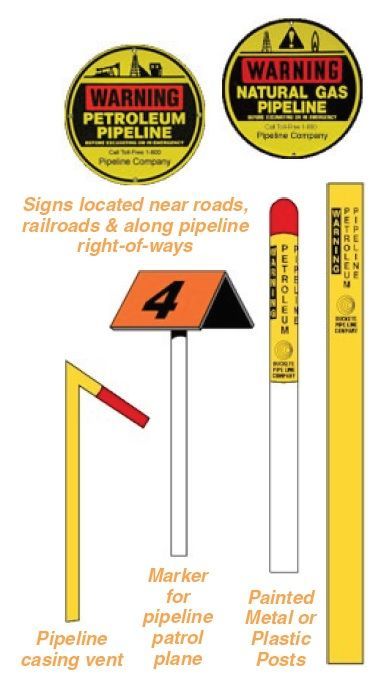
Are Markers Always Placed on Top of the Pipeline?
Markers indicate the general location of a pipeline. They cannot be relied upon to indicate the exact position of the pipeline they mark. Also, the pipeline may not follow a straight course between markers. And, while markers help locate pipelines, they are limited in the information they provide. They provide no information, for example, on the depth or number of pipelines in the vicinity.
How Can Your Recognize a Pipeline Leak?
Sight, sound, and smell are helpful in detecting pipeline leaks.
Look for:
- Crude oil or liquid petroleum products on the ground
- A dense white cloud or fog
- A spot of dead vegetation in an otherwise green location may indicate a slow leak
- Flames (if the leak has ignited)
Listen for:
- A roaring or hissing sound
Smell for:
- A pungent odor, sometimes like “rotten eggs”
- A gasoline-type odor
What Should You Do if You Suspect a Leak?
- Your first concern should be for your personal safety and that of those around you if you suspect a leak.
- Leave the area immediately
- Avoid driving into vapor clouds
- Avoid direct contact with escaping gases or liquids
- Avoid creating sparks or other sources of heat, which could cause the escaping liquids or vapor to ignite and burn. If you find yourself in an area
- where you suspect hydrocarbon vapors are present, do not light a match, start an engine, or even switch on an electric light.
- Call 9-1-1
- Notify the pipeline operator
Pipeline Contents Can Vary Greatly
- Pipelines carry both gaseous and liquid materials
- Many liquids form gaseous vapor clouds when released
- Many pipelines contain colorless and odorless products
- Some pipeline gases are lighter than air and will rise
- Other heavier-than-air gases and liquids will stay near the ground and collect in low spots
- All petroleum gases and liquids are flammable
- Any pipeline leak can be potentially dangerous
- Excavators and homeowners should dial 811 is 1-800-272-3020 to reach LA One Call before starting any digging projects on or near any pipelines
- These projects include fences, flagpoles, landscaping, storage buildings, foundations, swimming pools, ground clearing, deep plowing, laying underground pipe or wiring, or any other “digging” projects.
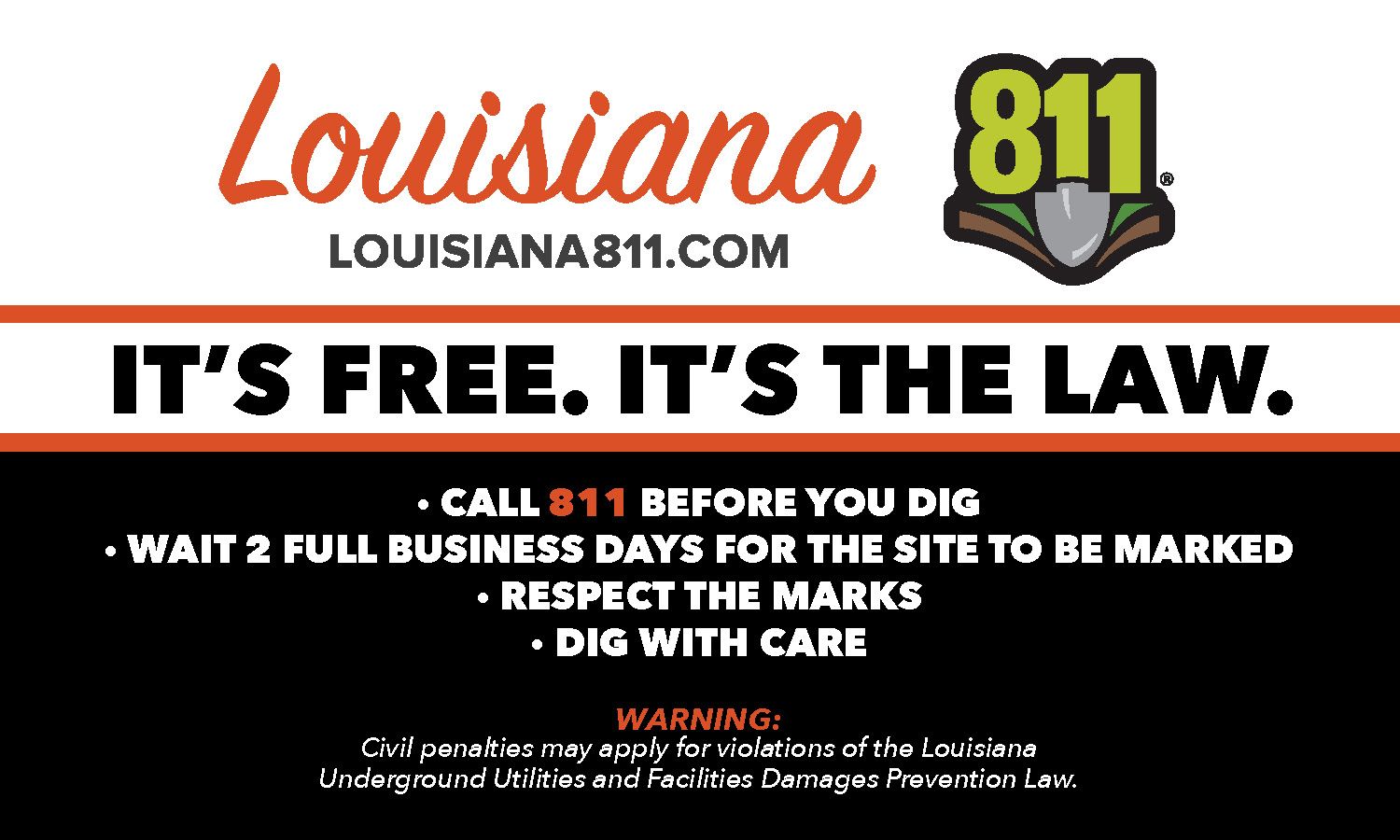
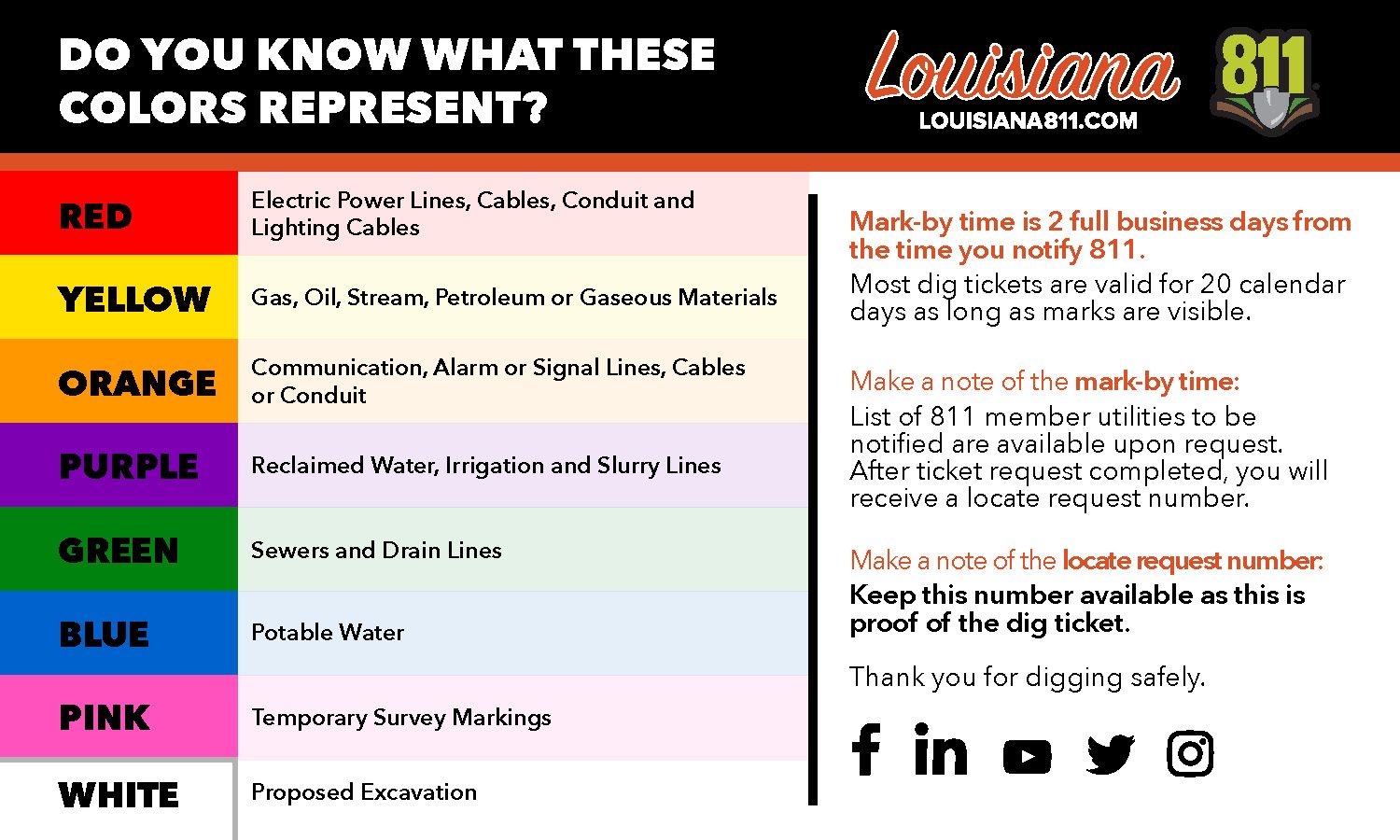
Resources: Pipeline Safety
Security and Crime Prevention
CYBERSECURITY

Internet Best Practices for Safety & Security
The Internet is a useful tool for providing information for education, music, shopping and travel. Most people use the Internet with good intentions. However, be aware of dangers and implement best practices so that you can use the Internet safely and with confidence.
- Exercise common sense. If something seems too good to be true, it probably is. Trust your instincts.
- Protect your identity. Don’t use a username you’ve used with any website in your e-mail address. Deal with sites that use encryption. Do not use the same password for every online account.
- Avoid use of personal credit cards. Use prepaid, single use cards for Internet purchases. Use secure sites with https: rather than http://. The “s” stands for “secure socket layer” and received data is encrypted.
- Monitor your financial accounts with online alerts.
- Be cautious when downloading. Always scan downloads with antivirus software.
- Keep your web browser up-to-date.
- Use strong passwords. Your passwords should include eight characters or more that also use a combination of numbers, letters and symbols. Do not share your passwords.
- Use privacy settings on social networking websites.
Protect Your Computer, Smartphone and Tablet
- Keep your firewall turned on
- Install or update antivirus software
- Keep your operating system up-to-date
- Be careful what you download, including apps
- Turn off your computer
Article source: moneycrashers.com/dark-web
Online Gaming
Parents need to supervise online gaming as much as possible. Be aware and wary of games that feature IM (instant messaging).
Social Media and Apps
Social media sites and apps are an important part of how we all use the Internet. Most social media sites, including Facebook, SnapChat, Twitter, Instagram and TikTok require users be at least 13 years old. By accessing these platforms earlier than age 13, young children are at an increased risk of encountering inappropriate content.
Article Source: www.missingkids.org/netsmartz/topics/socialmedia
Parental Tips
- Monitor children’s social media sites, apps and browsing history.
- Review or re-set your child’s privacy settings.
- Follow or friend your child on social media.
- Stay up-to-date on the latest apps, social media platforms and digital slang.
- Know your child’s user names and passwords for email and social media.
- Establish rules about appropriate digital behavior, content and apps.
Article source: https://stopbullying.gov/cyberbullying/digital-awareness-for-parents/index.html
Did You Know That One of the Kids’ Most Popular Apps Gives Strangers Access to Chat With Them Online?
It is important that children play age-appropriate games. Rating sites such as ESRB.org and CommonSenseMedia.org can help you decide if a game is appropriate.
Please visit the
National Cybersecurity Awareness website and the Department of Homeland Security to learn about the Stop Think Connect
campaign.
Protect Yourself from Online Fraud
- You are vulnerable whenever you are online.
- Practice safe web surfing by checking for the padlock icon in your browser bar indicating a secure connection.
- Avoid free Internet access with no encryption.
- Do not reveal personally identifiable information such as your bank account or social security number.
If You’ve Been Compromised
- Keep all evidence of the interaction and write down the date and time the incident occurred.
- Contact law enforcement to file a report.
- If you are the victim of online fraud, report it to the Department of Justice.
Resources: Cybersecurity
Entertainment Software Rating Board
Common Sense Media: Ratings and Reviews Parents Can Trust
PDF: Identify Theft and Internet Scams
ACTIVE SHOOTER
If you find yourself in an active shooting event, how to recognize signs of potential violence around you, and what to expect after an active shooting takes place. Remember during an active shooting to RUN. HIDE. FIGHT.
Be Informed
- Sign up for an active shooter training.
- If you see something, say something to an authority right away.
- Sign up to receive local emergency alerts and register your work and personal contact information with any work sponsored alert system.
- Be aware of your environment and any possible dangers.
Make a Plan
- Make a plan with your family, and ensure everyone knows what they would do, if confronted with an active shooter.
- Look for the two nearest exits anywhere you go, and have an escape path in mind & identify places you could hide.
- Understand the plans for individuals with disabilities or other access and functional needs.
During
- RUN and escape, if possible.
- Getting away from the shooter or shooters is the top priority.
- Leave your belongings behind and get away.
- Help others escape, if possible, but evacuate regardless of whether others agree to follow.
- Warn and prevent individuals from entering an area where the active shooter may be.
- Call 911 when you are safe, and describe the shooter, location, and weapons.
HIDE - If Escape is Not Possible
- Get out of the shooter’s view and stay very quiet.
- Silence all electronic devices and make sure they won’t vibrate.
- Lock and block doors, close blinds, and turn off lights.
- Don’t hide in groups- spread out along walls or hide separately to make it more difficult for the shooter.
- Try to communicate with the police silently. Use text messages or social media to tag your location, or put a sign in a window.
- Stay in place until law enforcement gives you the all-clear.
- Your hiding place should be out of the shooter’s view and provide protection if shots are fired in your direction.
FIGHT - As an Absolute Last Resort
- Commit to your actions and act as aggressively as possible against the shooter.
- Recruit others to ambush the shooter with makeshift weapons like chairs, fire extinguishers, scissors, books, etc.
- Be prepared to cause severe or lethal injury to the shooter.
- Throw items and improvise weapons to distract and disarm the shooter.
After
- Keep hands visible and empty.
- Know that law enforcement’s first task is to end the incident, and they may have to pass injured along the way.
- Officers may be armed with rifles, shotguns, and/or handguns and may use pepper spray or tear gas to control the situation.
- Officers will shout commands and may push individuals to the ground for their safety.
- Follow law enforcement instructions and evacuate in the direction they come from, unless otherwise instructed.
- Take care of yourself first, and then you may be able to help the wounded before first responders arrive.
- If the injured are in immediate danger, help get them to safety.
- While you wait for first responders to arrive, provide first aid. Apply direct pressure to wounded areas and use tourniquets if you have been trained to do so.
- Turn wounded people onto their sides if they are unconscious and keep them warm.
- Consider seeking professional help for you and your family to cope with the long-term effects of the trauma.
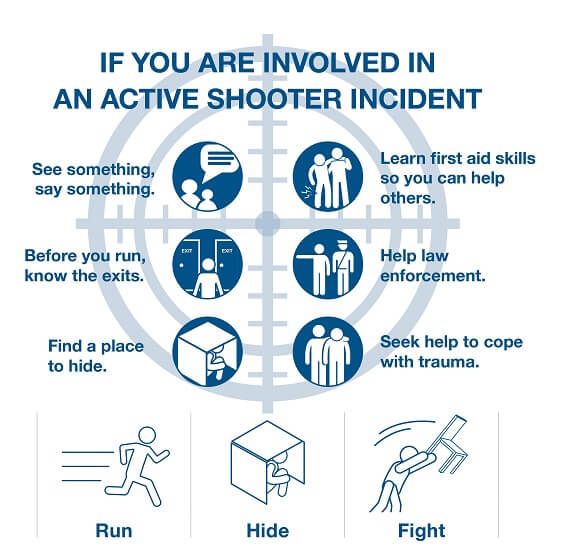
Resources: Active Shooter
HUMAN TRAFFICKING
About Human Trafficking
The U.S. Department of State defines Human Trafficking as “trafficking in persons,” and “modern slavery” are umbrella terms used to refer to both sex trafficking and compelled labor. Human trafficking deprives millions worldwide of their dignity and freedom. In Louisiana in 2018, more than half of the human trafficking victims were children according to Legislative Auditor Daryl Purpera’s office.
U.S. Department of Homeland Security defines human trafficking as: Modern day slavery; Exploiting a person through force, fraud or coercion; Sex trafficking, forced labor and domestic servitude; Any person under the age of 18 involved in a commercial sex act. Victims can be of any nationality, age, socioeconomic status, or gender.
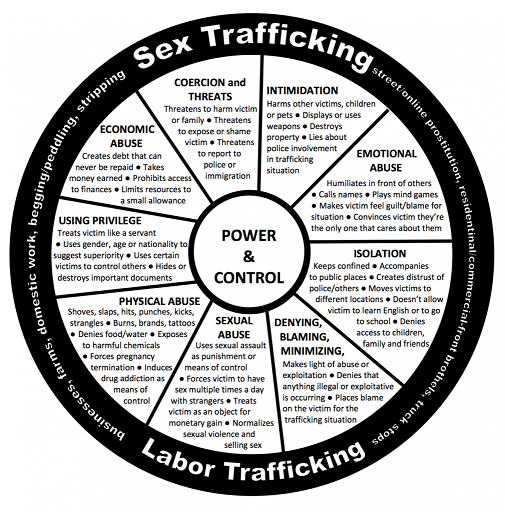
Recognize and Report Suspected Human Trafficking
- Contact federal law enforcement:
- 1-866-DHS-2-ICE
- Submit a tip online at
www.ice.gov/tips
- Victim support from the National Human Trafficking Resource Center (NHTRC):
- 1-888-373-7888
- Text HELP or INFO to Befree(2333733).
- If you or someone you know is in immediate danger, please call 911.
Resources: Human Trafficking
National Human Trafficking Hotline:
Call 1-888-373-7888 or Text “Help” to 233733
National Center for Missing and Exploited Children
24 Hour Hotline:
Call 1-800-THE-LOST (1-800-843-5678)
PDF: Blue Campaign - What is Human Trafficking?
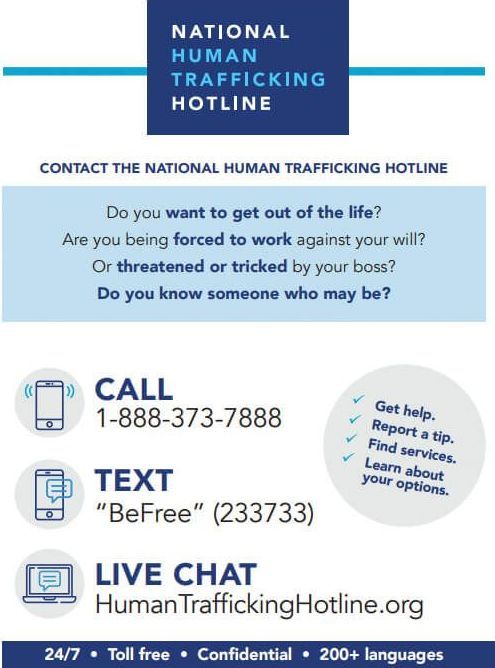
SUSPICIOUS ACTIVITY AND TERRORISM
Report Suspicious Activity
Prompt and thorough reporting of suspicious activities may prevent a terrorist attack. When reporting suspicious activity, it is helpful to give the most accurate description possible of the situation, including:
- Brief Description of the Activity
- Date, Time, and Location of the Activity
- Physical Identifiers of the Person(s) Observed
- Vehicle Descriptor Information
- Where Any Suspicious Persons May Have Gone
- Your Name and Contact Information (optional)
Tips for Reporting
Being aware of signs indicative of terrorist planning can aid law enforcement in the discovery of possible terrorist activity. If you believe you have information that would help authorities, you are encouraged to do the following:
- Call 911 for life-threatening emergencies
- Fusion Center Hotline: 1-800-434-8007 (24 Hour Assistance)
- Report Suspicious Activity to the Louisiana State Police (Online Report)
These complaints are received and processed during normal business hours, Monday – Friday.
In case of an emergency, dial 911. - LA-SAFE website
E-mail: lafusion.center@la.gov
These e-mails are received and processed during normal business hours, Monday – Friday.
In case of an emergency, dial 911.) - “See Something Send Something” mobile application
7 Signs of Terrorism
Certain activities, especially those at or near sensitive facilities, including government, military or other high profile sites or places where large numbers of people congregate, may indicate terrorist planning phases. Suspicious activities of interest that should be reported to law enforcement are commonly referred to as the 7 Signs of Terrorism.
1. Surveillance:
Recording or monitoring activities. May include drawing diagrams, note taking, use of cameras, binoculars or other vision-enhancing devices or possessing floor plans or blueprints of key facilities.
2. Elicitation:
Attempts to obtain operation, security and personnel-related information regarding a key facility. May be made by mail, fax, e-mail, telephone or in person.
3. Tests of Security:
Attempts to measure reaction times to security breaches or to penetrate physical security barriers or procedures in order to assess strengths and weaknesses.
4. Acquiring Supplies:
Attempts to improperly acquire items that could be used in a terrorist act. May include the acquisition of explosives, weapons, harmful chemicals, flight manuals, law enforcement or military equipment, uniforms, identification badges or the equipment to manufacture false identification.
5. Suspicious Persons:
Someone who does not appear to belong in a workplace, neighborhood or business establishment due to their behavior, including unusual questions or statements they make.
6. Dry Runs/Trial Runs:
Behavior that appears to be preparation for a terrorist act without actually committing the act. Activity could include mapping out routes and determining the timing of traffic lights and flow.
7. Deploying Assets:
Placing people, equipment and supplies into position to commit the act. This is the last opportunity to alert authorities before the terrorist act occurs.
Resources: Suspicious Activity and Terrorism
Emergency Resources
IBERVILLE PARISH RESOURCES
LOUISIANA STATE RESOURCES
Governor’s Office of Emergency Preparedness and Homeland Security
Louisiana Emergency Response Commission
Louisiana Severe Weather Planning
Louisiana Department of Transportation & Development
Call 5-1-1
Louisiana Department of Health
(Call Before You Dig/Pipeline Safety)
Call 8-1-1
Department of Children and Family Services
FEDERAL & NATIONAL RESOURCES
U.S. Department of Homeland Security
U.S. Department of Education – School Emergency Planning
National Highway Traffic Safety Administration
U.S. Environmental Protection Agency
Centers for Disease Control and Prevention
Official Web Portal of U.S. Government
National Cybersecurity Awareness
Report Child Abuse & Neglect Toll Free 24/7:
1-855-452-5437
